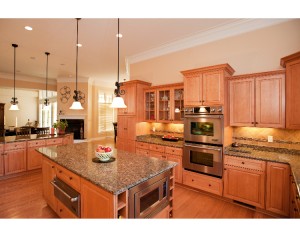 Consider Your Day-to-Day Lifestyle
Consider Your Day-to-Day Lifestyle
Almost every real estate or home renovation reality TV show involves the quest for an open concept floor plan. Open concept design, which means common areas in a home have no walls or only partial walls, grew out of mid-century modern architecture in the 1950s. And although there’s already some buzz about “retro” home design favoring enclosed living rooms and kitchens, open concept isn’t going away.
If you are designing and building a new home, you can get the exact layout that works for your family’s lifestyle. Open concept floor plans, which typically create a “great room” out of the kitchen, dining room and living room spaces, have stayed so popular because they offer distinct advantages, such as:
Better Light – Removing walls lets natural light into the entire living space and creates more of a visual connection with the outdoors.
Improved Traffic Flow – When you have friends and family over, people can move around without bumping into each other in doorways.
Social Advantages – People cooking or cleaning up in the kitchen can be a part of the living room conversation or keep a better eye on younger children playing there.
More Usable Space – Even if the overall square footage is the same, removing walls and doors adds to the usable space in an open concept design.
Before you settle on an open concept floor plan for your new home, take time to think about how your family functions each day, and how that might change over time. There are a few disadvantages to having an open concept layout on the main floor, including:
Less Privacy – Depending on how many people share your house, you might need more private rooms so someone can avoid noise and have their own space.
Visible Clutter – Open concept means a lack of doors. Families raising young children might appreciate an enclosed playroom that’s easier to childproof and that has a door they can close to quickly hide all of the toys.
Less Wall Space – Displaying your favorite artwork and photographs, if you have a large collection, can be more challenging in an open concept floor plan. Fewer walls means fewer spots to place certain types of furniture, as well.
Building a custom home gives you the opportunity to take everything into consideration when choosing a floor plan and tweak any open concept floor plan to meet your specific needs.
